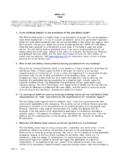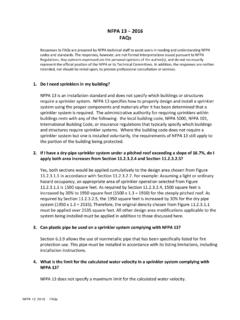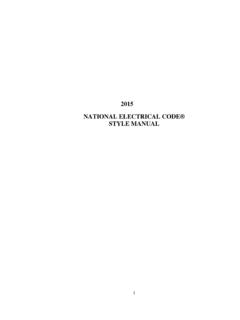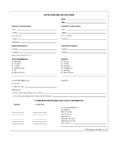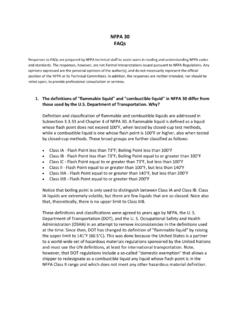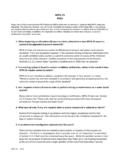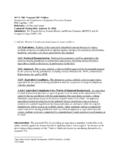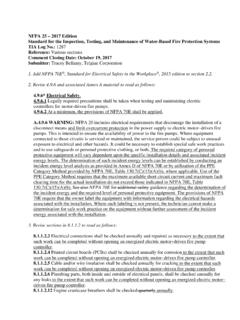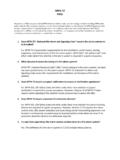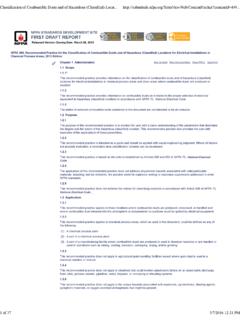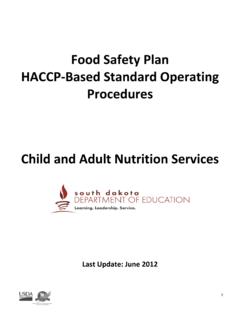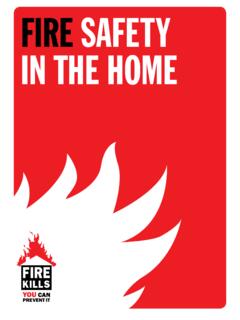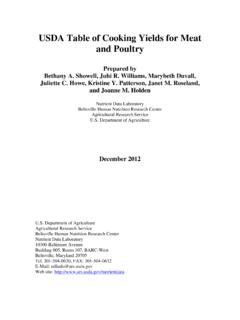Transcription of Marty Ahrens and Radhika Maheshwari October 2021 - NFPA
1 Home Structure FiresMarty Ahrens and Radhika MaheshwariOctober 2021 Copyright 2021 National Fire Protection Association ( nfpa ) nfpa Research pg. 1 ThousandsFigure 1. Reported home structure firesby year: 1980 2020 All homes1- or 2-familyApartmentsKey findings More than one-quarter of the reported fires in 2015 2019 (26 percent) occurred in home environments. In addition, three-quarters of the civilian fire deaths (75 percent) and almost three-quarters of the reported civilian fire injuriesi (72 percent) during that time period were caused by homeii structure fires. During this five-year period, US fire departments responded to an estimated average of 346,800 home structure fires per year. These fires caused an annual average of 2,620 civilian deaths; 11,070 civilian fire injuries; and $ billion in direct property damage.
2 Of the reported home fires in 2015 2019, 69 percent occurred in one- or two-family homes, including manufactured homes. These fires caused 85 percent of the home fire deaths, 65 percent of the home fire injuries, and 79 percent of the direct property damage. Certain scenarios appeared to be more dangerous during this time period than in the past. The death rate per 1,000 reported home fires that began with the ignition of either upholstered furniture or mattresses and bedding in 2015 2019 was more than double what it was in 1980 1984. Most home fires and fire casualties resulted from one of five causes: cooking , heating equipment, electrical distribution and lighting equipment,iii intentional fire setting, and smoking materials.
3 Over the five-year period of 2015 2019, cooking was the leading cause of home fires and home fire injuries. Smoking materials caused the most home fire deaths. While the number of reported home fires and the number of home fire deaths have been cut in half since 1980 and population-based home fire and home fire death rates have fallen by roughly two-thirds, the death rate per 1,000 reported home fires has remained fairly consistent. This rate was slightly higher recently than it was in 1980 for homes overall and even more so for i Death and injury estimates exclude firefighter casualties. ii The term home includes one- or two-family homes, manufactured homes, and apartments or other multifamily housing, regardless of ownership.
4 Iii The term electrical distribution and lighting equipment includes installed wiring, outlets, switches, cords, plugs, power supplies, and lighting. one- and two-family homes. It appears that most of the reduction in fire deaths over the past decades has been due to a reduction in fires rather than the prevention of harm after a fire is reported. Trends in reported fires Figure 1 shows that the 2020 estimate of 356,500 reported home fires was 51 percent lower than the estimate of 734,000 in 1980 and 5 percent higher than the 2019 estimate of 339,500. These results, which come from the nfpa fire experience survey, are provided annually in the nfpa Fire Loss in the United States The decline in reported fires was sharpest during the 1980s, continued more slowly in the 1990s, and mostly leveled off in the past two decades.
5 The 2020 estimate of reported fires in one- or two-family homes was 54 percent lower than in 1980 and 2 percent higher than the 264,500 in 2019. The 2020 estimate of fires in apartments or other multifamily structures was 40 percent lower than in 1980. Apartment fires jumped 15 percent from 75,000 in 2019 to 86,000 in 2020, negating the 13 percent decline that occurred between 2018 and 2019. The 2020 home fire death toll of 2,580 was 50 percent lower than the 5,200 deaths in 1980 and 7 percent lower than the 2019 estimate of 2,770. See Figure 2. nfpa Research pg. 2 The estimated number of reported home fire injuries in 2020 was 42 percent lower than the 1980 estimate and 6 percent lower than the estimated 12,200 in 2019.
6 See Figure 3. The population-based home fire and fire death rates in 2020 were roughly one-third the rates from 1980. The rate of reported home fires per thousand population fell from in 1980 to in 2020. In addition, the 2020 rate of home fire deaths per million population was 66 percent lower than the deaths per million population in 1980. See Figure 4. In 2020, the overall home fire death rate per 1,000 reported fires was , a 2 percent increase from 1980. The death rate per 1,000 reported apartment fires fell 43 percent to during the same period. Apartment buildings, particularly high-rise apartments, are more regulated than one- or two-family homes The rate of deaths per 1,000 reported one- or two-family home fires was 16 percent higher than the 1980 rate.
7 While rates fluctuated, 1984 was the only year in which the death rate per 1,000 one- or two-family home fires ( ) was lower than it was in 1980. See Figure 5. During 2015 2019, 71 percent of US housing units were in one- or two-family dwellings,2 including manufactured homes but excluding attached one-family homes such as row or townhouses. The 2020 rate of civilian injuries per 1,000 apartment fires was 34 percent higher than the 1980 rate of For one- or two-family home fires, the 2020 rate of injuries per 1,000 fires was 17 percent higher than the 1980 rate of The injuries per 1,000 home fires overall in 2020 was 20 percent higher than the rate in 1980. See Figure 6. One reason for the disparity between the death rates for reported apartment fires and one- or two-family home fires is that more code requirements regulate apartments than one- or two-family homes.
8 As a result, apartment buildings are more likely to have monitored smoke detection systems that notify the fire department when activated. This could also result in more minor fires being reported in apartment properties. From 2015 to 2019, 63 percent of the reported apartment fires had incident types indicating a confined cooking fire. Many were extinguished by the time the fire department arrived. Only 26 percent of the fires in one- or two-family homes were confined cooking fires. Apartments are also more likely to have sprinklers than one- or two-family ,70011,50005,00010,00015,00020,00025,000 Figure 3. Reported home structure fire injuriesby year: 1980 2020 5,2002,58001,0002,0003,0004,0005,0006,00 0 Figure 2. Home structure fire deathsby year: 1980 2020 per million populationFigure 4.
9 Reported home fire death rates per million population by year: 1980 2020 nfpa Research pg. 3 About the data The trends discussed above are based on summary data collected by nfpa s fire department experience survey. The survey results are combined with the more detailed, incident-based National Fire Incident Reporting System (NFIRS) data to provide a deeper understanding of the causes and circumstances of these fires. The most current NFIRS national dataset is for 2019. Estimates are typically presented as national averages. Unknown data were allocated proportionally. Who are the victims? Of the people who died in home fires, 57 percent were male, as were 55 percent of those who were non-fatally injured. Figure 7 shows that nearly three out of every five fatal home fire victims were 55 years old or over (57 percent), while nearly two out of every five were at least 65 years old (37 percent).
10 One of every five fatal home fire victims was between 55 and 64 years of age (20 percent). More than three of every five people who were non-fatally injured were between 25 and 64 years of age (62 percent). nfpa s report Home Fire Victims by Age and Gender provides more details on the ages and genders of casualties by the leading fire 55 910 1415 2425 3435 4445 5455 6465 7475 8485 and overFigure 7. Home fire deaths and injuriesby age group: 2015 2019 per 1,000 firesFigure 6. Injuries per 1,000 reported home firesby year and occupancy: 1980 2020 All homes1- or per 1,000 firesFigure 5. Deaths per 1,000 reported home firesby year and occupancy: 1980 2020 All homes1- or 2-familyApartmentsNFPA Research pg. 4 Figure 8 shows that those who were fatally injured in home fires were more likely to have been trying to escape, sleeping, unable to act, or acting irrationally than the non-fatally injured.
